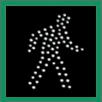October 2007 meeting
CB: TAC will prioritize solutions. Pedestrians should be primary goal. Analysis should distinguish between various buses: MTA, charter, jitney.
SS: Short term recommendations are critical. (NR: DOT is willing to revisit Hudson Yards EIS if improvements are warranted. Issue is making changes at the Lincoln Tunnel.)
Improvements to tunnel operations should be considered. For example, lane reversals should be considered as an operational improvement. A peak hour surcharge should be levied on trucks. The PA should be more active in the study.
Pedestrian safety is also important. (NR: NYC DOT has a good accident data base. DOT will prepare collision diagrams and obtain NYPD records. Will try to obtain accident information before the next TAC meeting.)
CB: The study should review legal vs. illegal bus layovers and their effect on sensitive land uses, such as schools and playgrounds.
AL: A primary and secondary study area should be considered. (CB: Disagreed. Lincoln Tunnel issues create a ripple effect through the network.)
CB: Should consider a one way configuration for Eleventh Avenue between 45th and 57th streets
SS: PA data regarding lane assignment and usage should be requested. The Hub count was conducted the previous week. These counts should be compared with historical data by tube which NYMTC should have
November 29- 2007 before the TAC
PlaNYC’s transportation goals are focused on reducing congestion through decreasing vehicle trips and improving transit service. It describes the cost of congestion, including economic costs, environmental impacts and toll on quality of life:
Road congestion costs all of us money—in higher store prices, because freight deliveries take longer; in higher costs for services and repairs, because delays mean repairmen visit fewer clients each day; in taxi fares, in wasted fuel, in lost revenue And there are other consequences as well. Snarled traffic slows bus service. Emergency vehicles lose valuable response time. Finally, cars and trucks contribute 20% of the City’s global warming emissions and a large part of the ozone—a serious pollutant that can cause respiratory illnesses like asthma—in our air.
PlaNYC discusses improving traffic flow by reducing congestion through initiatives like congestion pricing and better management of existing infrastructure. Further, PlaNYC prioritizes transit infrastructure, transit service and cycling/ferry options before discussing improvements to traffic flow. In this spirit, the goals of the study should reflect PlaNYC, as well as the work and plans developed by local community residents and representatives, including the Ninth Avenue Renaissance report.
Comments on the Scope of Work
The study should limit analyses of socio-economic issues, demographics, land use and zoning issues.The study should analyze the following intersections along the 42nd Street and Ninth Avenue corridors:
West 42nd Street at Eleventh Avenue
West 42nd Street at Tenth Avenue
West 42nd Street at Ninth Avenue
West 42nd Street at Eighth Avenue
Ninth Avenue at West 41st Street
Ninth Avenue at West 40th Street
Ninth Avenue at West 39th Street
Ninth Avenue at West 38th Street
Ninth Avenue at West 37th Street
Ninth Avenue at West 36th Street
